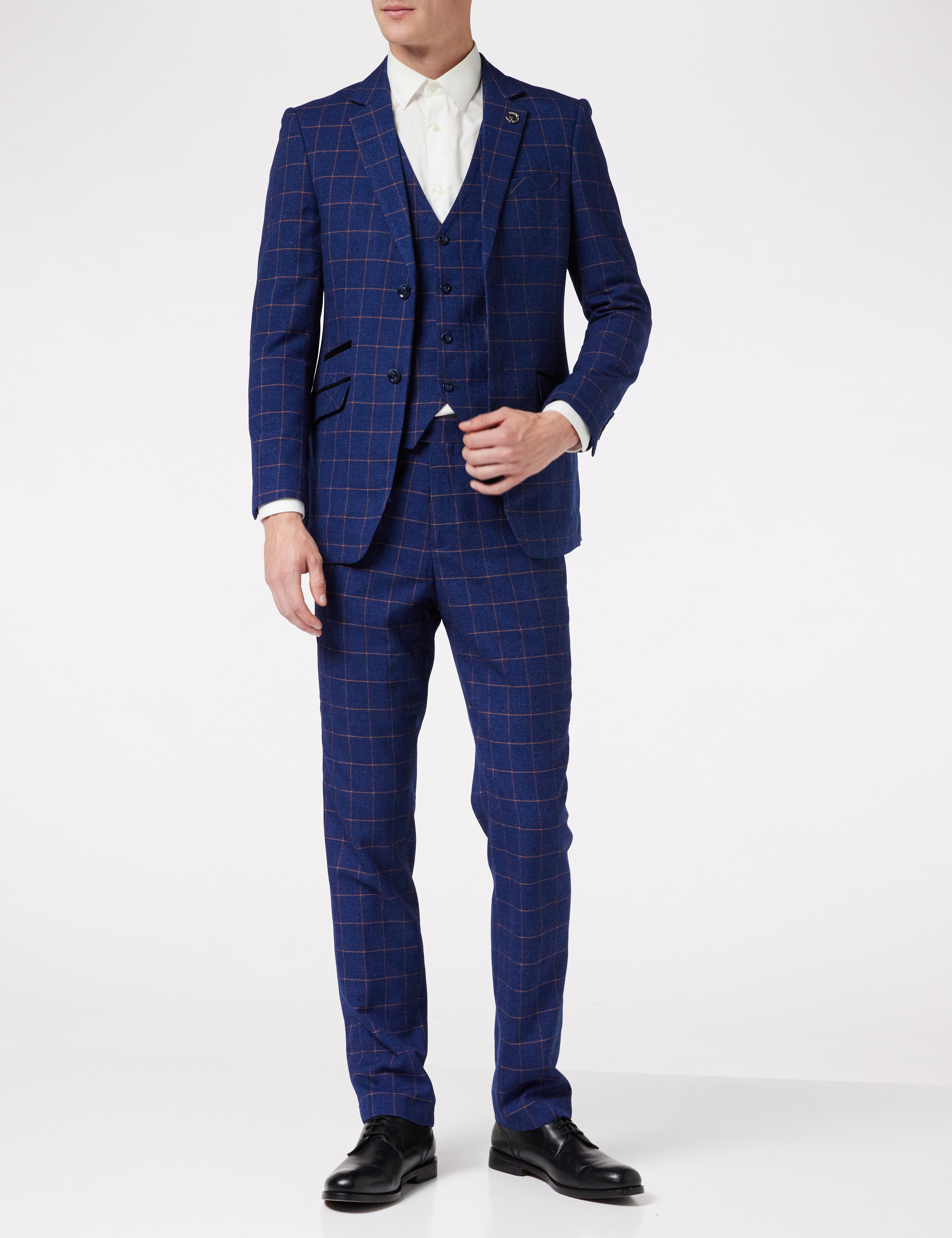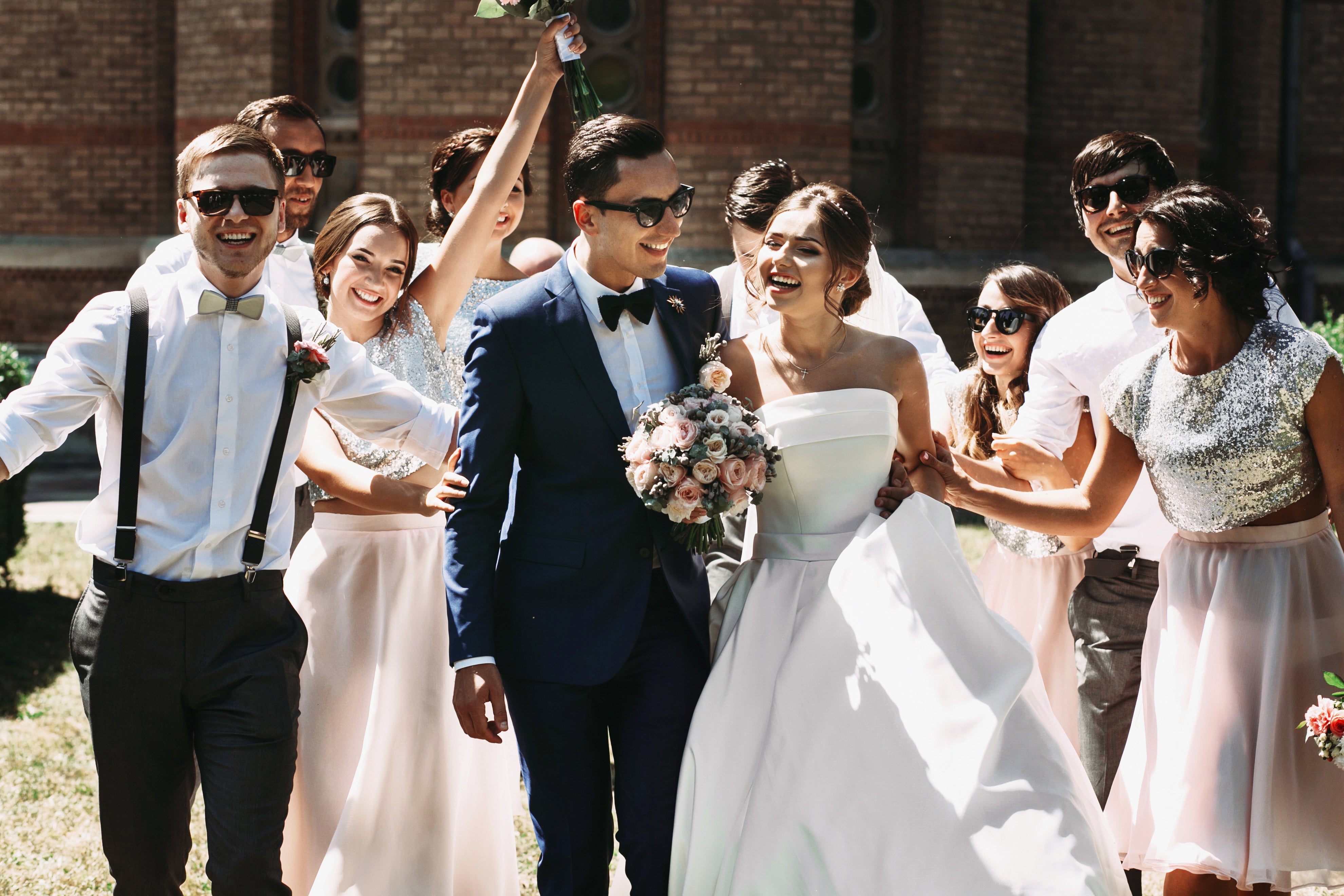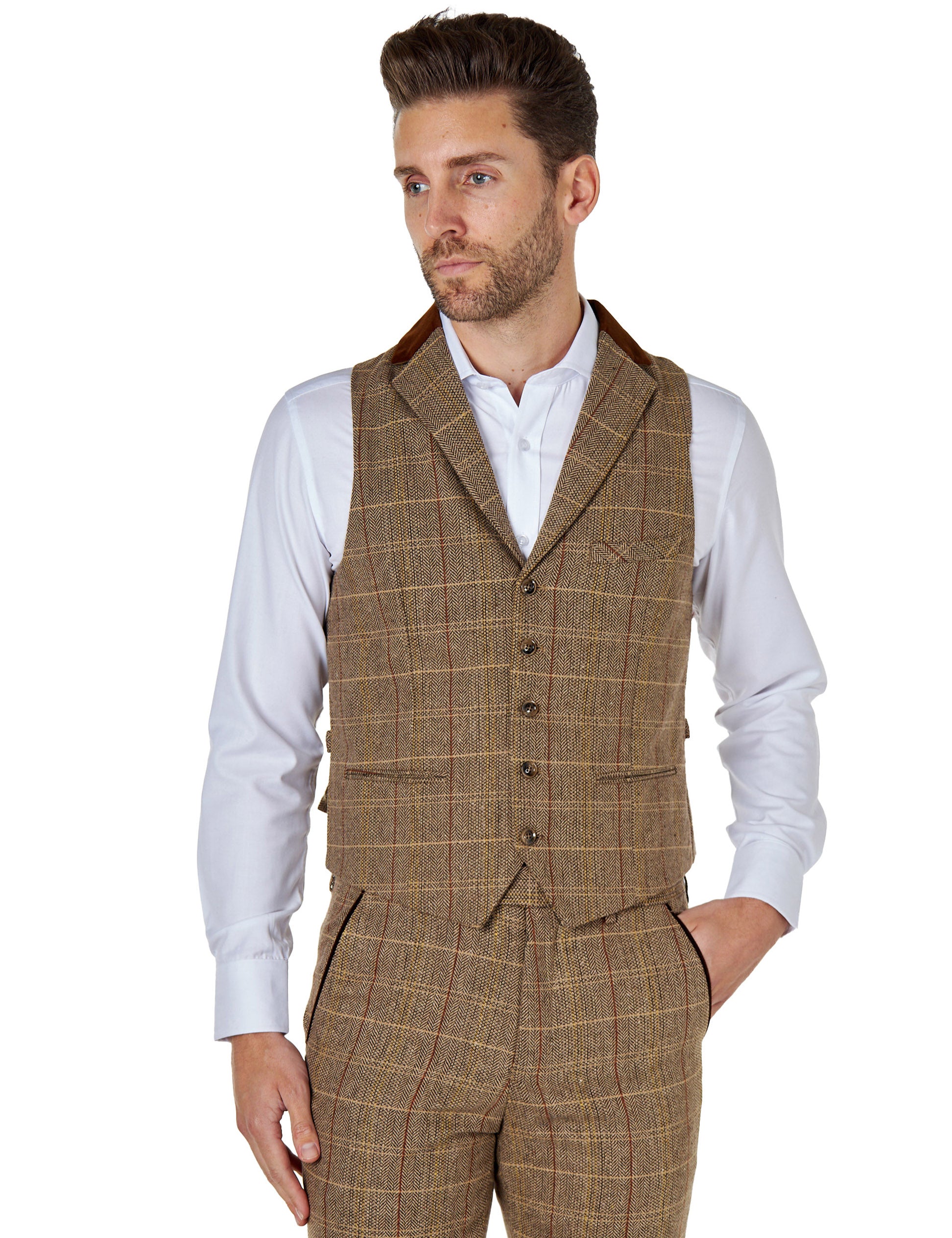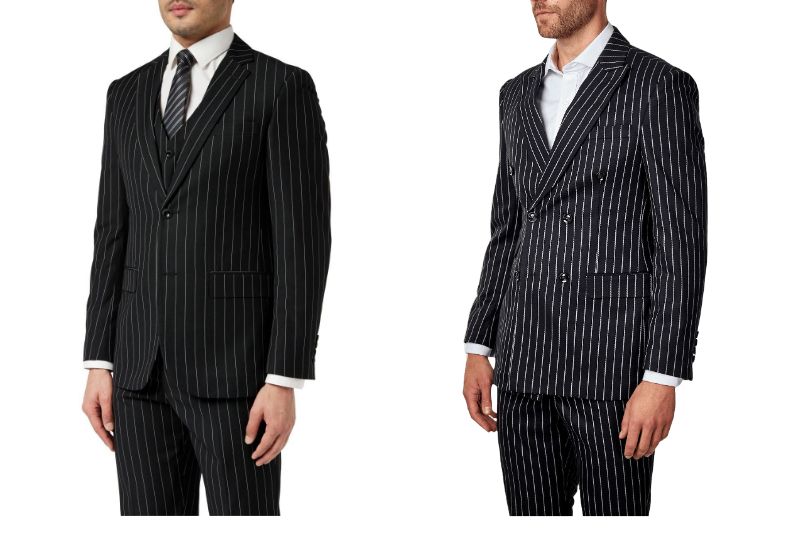Men’s suits come in two types – single-breasted and double-breasted. Double-breasted suits were the norm right up until the 1940s. If you look at pre-war footage of regular guys in the street as well as kings, prime ministers and presidents, they would almost always be in a double-breasted suit. It bridged the formal/informal gap, too. Single-breasted suits did exist, but they were relatively uncommon, and definitely informal.
Everything changed during the war. Just as women’s skirts and dresses became shorter thanks to fabric shortages, men’s suits became simplified. A single-breasted suit basically wraps around the body, with an inch or two of overlap, and a plunging lapel that exposes more of the shirt and tie. Double-breasted suits, however, need more material for the broader crossover, and even the buttons would have been in short supply.
As the single-breasted suit became normalised through exposure, it actually had the effect of making the old double-breasted suit look like a relic from a bygone era – which, indeed, it was. Society changed, and the age of deference came to an abrupt end. The fashions of the 1930s might as well have been from the 1830s.
Single-breasted suits became the dominant form as the 1950s, 60s and 70s progressed. The people associated with double-breasted suits tended to be the elderly upper and middle classes, who probably wore the exact same threads as they had done before the war. The Major from Fawlty Towers would be seen in nothing else.
But the 1980s looked at fashion a bit differently. There was much more of a willingness to delve into the past to arrive at sounds and looks, with artists rediscovering the delights of the smoky jazz bar alongside the unique new sounds of electronic music. And in that air of flux, the stage was set for a return of the double-breasted suit, a hint at perhaps more glamorous times.
The style lasted into the early 1990s, but again fell by the wayside as people’s tastes melted into a more casual, colourful style. Single-breasted suits fit the zeitgeist better. But this time, the double-breasted suit wasn’t banished completely – it remained as just another option for the suit-wearer.
And that brings us back up to the present. The double-breasted suit is here to stay, and it lives happily alongside its single-breasted counterpart. Your wardrobe should probably have examples of both, because it’s good to mix it up a little, perhaps having a single for work and a double for play, or vice versa. Below is how you can tell them apart.
Single breasted vs double breasted suits – the differences
When we compare these two styles of suit, we’re really only referring to the jacket. Trousers tend to be pretty much the same, although since a modern double-breasted suit usually has a slimmer fit, the trousers will follow that cue and have a slim profile of their own. Right now, as it happens, slim trousers are fashionable anyway, so this probably won’t be a notable difference on the street.
Buttons
The most immediately noticeable difference between the two styles is the buttons. Single breasted suits have one column of buttons and one set of buttonholes. With a double-breasted jacket, there are two columns, usually with two, three or four rows of buttons. The left column (on the right as you look at it) is completely aesthetic – it’s just there to bring balance to the fastening buttons, which are arranged right of centre. The overall effect is a rectangle or square of buttons, like the dots on a dice. There will usually be a functioning button on the left side, but it is inside the flaps, invisible to the world.


Flaps
With a single-breasted suit, the flaps meet cross over by just an inch, maybe two, from the waist up to the chest. When it is buttoned up, the column of buttons is central. With a double-breasted suit, the overlap is much more pronounced – there’s a crossover of perhaps six to eight inches , so the left flap extends all the way to the right of the torso, while the right flap is barely visible when the jacket is buttoned up.
Lapels
Single-breasted suits tend to have a notch lapel, which is a V-shaped cut where it meets the collar. With a double-breasted suit, the join almost always forms a peak lapel, which is where there’s no notch as such, although the lapel extends a small amount to form an angled detail, pointing towards the shoulders.
Fit
While both styles can come in neat, figure-profiling cuts, that’s the standard look for the modern double-breasted suit. The form and structure lends itself to that style as it’s easier to bring the flaps round and fasten them in place than is the case with the lower fastens of the single. That’s not to say you can’t have a lean-fitting single-breasted suit, but realistically, it’s only available if you have it tailored, as an off-the peg single-breaster will usually be designed for a looser fit.
Vents
We’re probably detailing a traditional difference rather than a contemporary one here, but single-breasted suits will usually have single cut up the middle of the back for a vent, whereas a double breasted tends to have either no vent at all (for a tighter, tailored look) or two vents, widely spaced. This isn’t a hard and fast rule, though – both can come with any or no vent today.
Formality
There isn’t much between the two styles in terms of formality. Double breasted suits might be a little more “dressy”, so can lend themselves to more formal occasions, but that’s largely because they are less common, so won’t be mistaken for office wear. But really, there are no form boundaries here – both can work formally or informally, depending on how you wear your shoes, hair and accessories like tie and pocket square.
That pretty much sums up single breasted vs double breasted suits – which do you prefer? Whatever your favoured flaps, lapels and fit, you can now take a more educated look at our fine collection of suits.










